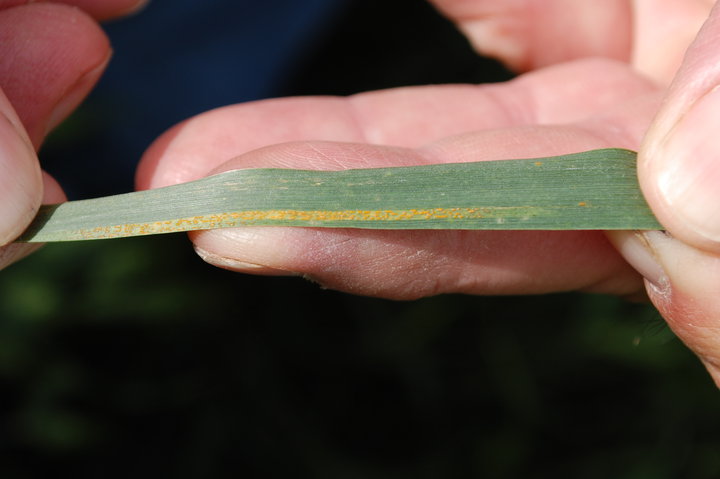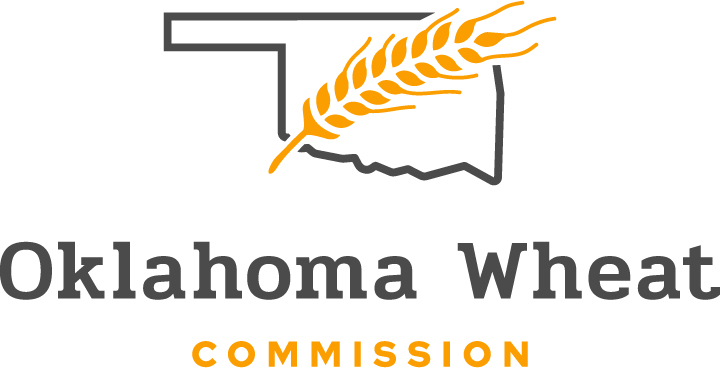
Agricultural News
Wheat Foliar Diseases Becoming Active in Oklahoma- OSU Pathologist Dr Bob Hunger Explains
Fri, 04 Mar 2016 11:15:08
 Oklahoma State University Extension Wheat Pathologist Dr. Bob Hunger says with the warmer temperatures and some moisture in parts of Oklahoma- there is a pickup in disease in Oklahoma wheat fields. Here is his latest report and reports from some of his colleagues provided by Dr. Hunger as well:
Oklahoma State University Extension Wheat Pathologist Dr. Bob Hunger says with the warmer temperatures and some moisture in parts of Oklahoma- there is a pickup in disease in Oklahoma wheat fields. Here is his latest report and reports from some of his colleagues provided by Dr. Hunger as well:
Dr. Hunger writes "Foliar diseases are becoming active in Oklahoma. Around Stillwater I have found both leaf and stripe rust, powdery mildew, and septoria. Incidence/ severity of all these foliar diseases is relatively light, but I am especially watching what happens to the leaf and stripe rust. The leaf rust pustules are small and on lower/older leaves indicating that leaf rust likely overwintered in Central OK. The stripe rust pustules were on the upper leaves of 'Pete' wheat (see photo) indicating the spores causing these initial infections likely blew up from the south. With rain and cool wet weather in the forecast, I definitely expect for there to be an increase in foliar diseases. Around Stillwater, I also have seen quite a few aphids (mostly bird cherry-oat but also a few greenbug) and many lady beetles. However, no symptoms yet of barley yellow dwarf.
"Gary Strickland, OSU SWREC Dryland Cropping Systems Specialist based in Jackson County, relayed to me that in SW OK he has seen leaf rust in fairly high levels on lower leaves of Endurance and other wheats, and has heard reports of stripe rust but has not seen any himself.
"Yesterday I traveled to north-central OK (Alva). On the way there and while there I visited several fields and found a few very small leaf rust pustules. Overall the wheat from I-35 over to Alva (Hwy 11) looked good and was greening-up nicely. Also while in Alva, numerous producers, etc. relayed reports of mostly leaf rust showing up across central OK, such as leaf rust around Geary, OK, etc.
"Regarding rust incidence/severity in Texas, I talked to a wheat breeder in Texas last week and he indicated that wheat in southern Texas was showing both leaf and stripe rust but had not yet reached a severe level. Early next week I'll be at a meeting of wheat pathologists and should be able to find out more about diseases in Texas.
"All these reports indicate the potential for significant foliar disease on the current wheat crop. Genetic resistance in some of wheat varieties helps protect against the foliar diseases, but fungicides also provide an excellent management tool to protect not only yield, but also quality (test weight). To help with deciding if and when to apply a fungicide, Dr. Jeff Edwards and I earlier this week updated and revised CR 7668 (Foliar Fungicides and Wheat Production in Oklahoma March 2016). It can be found at by clicking on the CR number above. This Current Report discusses the significant aspects related to using fungicides to manage wheat foliar diseases.
"One point I want to be sure to emphasize when using fungicides is the importance to not exceed the maximum amount of a fungicide applied to a crop in a single year. Such a consideration couldespecially be an issue when more than one fungicide application is made. In many states through the southeastern region of the U.S., two fungicide applications on wheat are more common, with the last application typically targeted toward Fusarium head blight (scab). In Oklahoma, where scab usually is not a concern, deciding when to make a single fungicide application typically is the only consideration.
"However, if you have early disease pressure from stripe rust or have early season powdery mildew, tan spot, or Septoria leaf blotch in no-till fields, more than one application may be needed to adequately manage these diseases. In these situations, care must be taken to insure label compliance. For example, if an early application of a generic form of tebuconazole is applied at 4 oz/ac, a subsequent application of any fungicide containing tebuconazole around heading would put you over the 4 oz limit for the crop season. Thus, be sure to read the label to determine the maximum amount of a chemical that can be applied in a single season and the exact amount of a chemical(s) that is in a fungicide."
WebReadyTM Powered by WireReady® NSI
Top Agricultural News
More Headlines...





